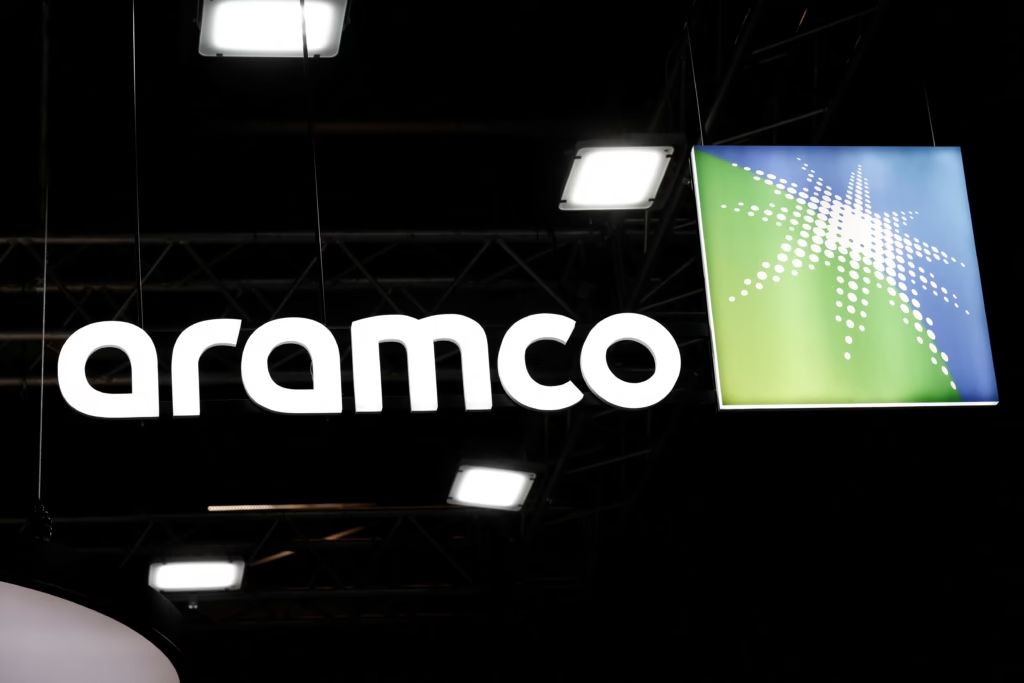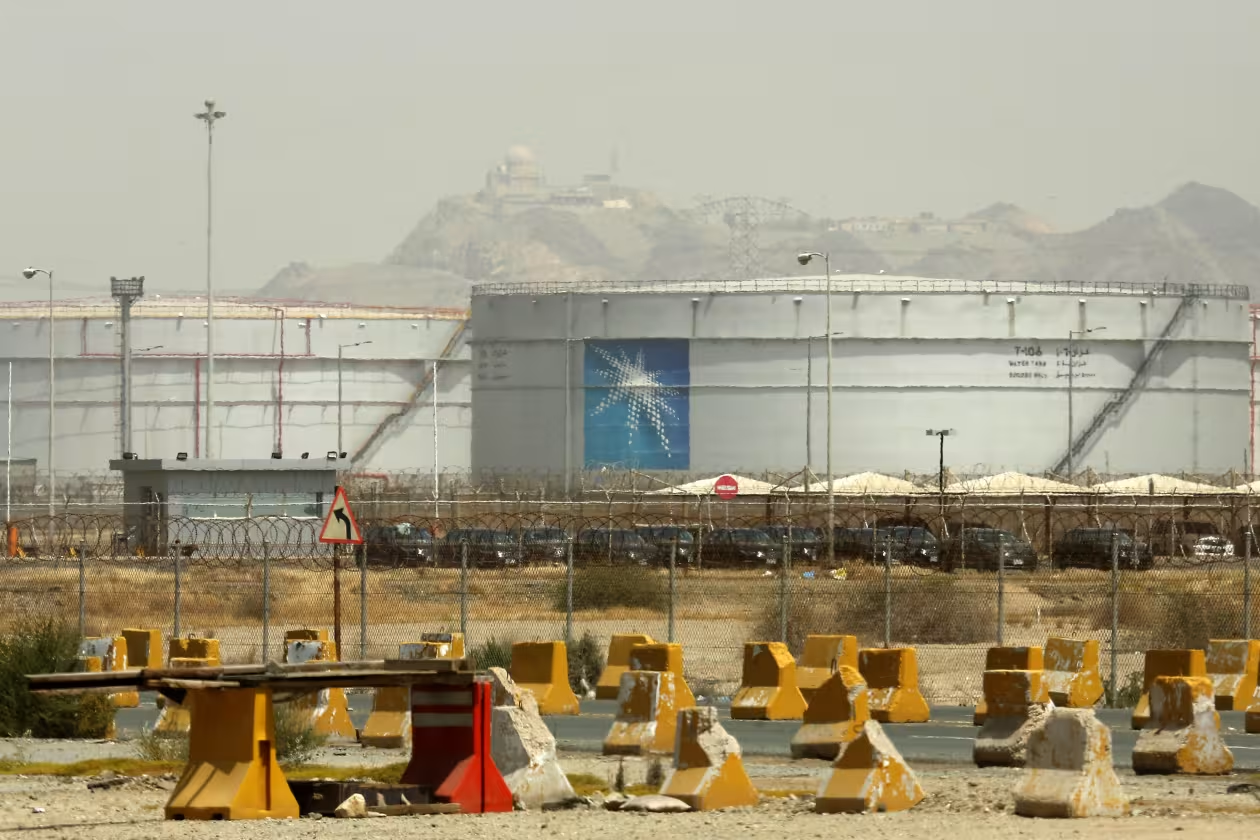Introduction
Saudi Aramco, the world’s largest oil company, has announced a significant reduction in its dividend payouts for 2025 following a notable decline in net income. The drop in profits is primarily attributed to falling oil prices and lower sales volumes. This move is set to impact Saudi Arabia’s fiscal landscape and its ambitious Vision 2030 development projects. As the backbone of the Saudi economy, Aramco’s financial decisions carry substantial implications for the country’s budget and its ability to fund mega-projects.

The decision to cut dividends comes as a surprise to many investors who have long seen Aramco as a stable source of high returns, backed by the kingdom’s vast oil reserves. The reduced payout raises questions about the company’s financial strategy amid a volatile oil market and the broader implications for Saudi Arabia’s economy.
Financial Performance
In 2024, Saudi Aramco reported a net income of $106.2 billion, marking a 12% decrease from the $121.3 billion recorded in 2023. This decline is largely due to a combination of reduced crude oil prices and lower sales volumes. The average price of Brent crude, the global oil benchmark, dropped significantly over the year, impacting the company’s revenue streams.
As a result, Aramco has decided to distribute $85.4 billion in dividends for 2025, a substantial drop from the $124 billion paid out in the previous year. This reduction is seen as a strategic move to preserve cash amid uncertain market conditions and to sustain capital investments in upstream and downstream projects.
The company’s revenue also witnessed a decline, falling to $436.6 billion in 2024, down from $440.88 billion in 2023. Free cash flow decreased to $85.3 billion compared to $101.2 billion in the previous year, reflecting the impact of lower oil prices and rising operational costs.
Dividend Structure and Changes
The reduction in dividends includes a significant decrease in performance-linked payouts. These dividends are expected to shrink from approximately $43.1 billion in 2024 to about $900 million in 2025. The base payout for the fourth quarter of 2024 rose to $21.1 billion, but the performance-linked component dropped significantly to $200 million.
This shift in the dividend structure indicates Aramco’s cautious approach in managing cash flows amid uncertainties in the global oil market. Analysts suggest that by reducing performance-linked payouts, Aramco aims to mitigate the risk of financial strain if oil prices remain low or decline further.
Spark Logistics Signs Key MoUs to Bolster Saudi Supply ChainThe move also reflects a potential recalibration of the company’s dividend policy, which has been a crucial aspect of its appeal to investors since its historic initial public offering (IPO) in 2019. With a commitment to paying out substantial dividends, Aramco’s latest decision could prompt a reassessment of investor expectations and market valuation.
Impact on Saudi Arabia’s Economy
The dividend cut is anticipated to widen Saudi Arabia’s budget deficit, which has already been affected by lower oil prices and increased government spending. As the kingdom’s primary source of revenue, Aramco’s dividends play a critical role in funding Crown Prince Mohammed bin Salman’s Vision 2030 projects, including the $1.5 trillion Neom development and other infrastructure initiatives.
The reduction in dividends may force the Saudi government to explore alternative funding options or adjust its spending plans to avoid a significant fiscal shortfall. With oil revenues contributing to nearly 70% of the national budget, the fiscal strain could impact the pace of diversification efforts aimed at reducing the kingdom’s reliance on hydrocarbons.
Moreover, a prolonged period of lower oil prices could challenge Saudi Arabia’s ability to balance its budget, which is based on an assumed oil price of around $80 per barrel. Any further dip in prices could necessitate additional spending cuts or borrowing, potentially increasing the kingdom’s debt levels.
Capital Expenditure and Strategic Investments
Despite the decline in profits, Aramco has reaffirmed its commitment to maintaining capital investments, projecting expenditures between $52 billion and $58 billion in 2025. The company continues to focus on expanding its upstream and downstream capacities, with key investments in natural gas and petrochemicals as part of its long-term growth strategy.
Aramco’s plans to boost production capacity also align with the expectations of rising crude demand and plans by OPEC+ to increase output starting in April. The company currently has a production capacity of 9 million barrels per day, with a potential to activate an additional 3 million barrels per day if market conditions improve.
Analysts view this continued investment as a sign of Aramco’s confidence in the medium to long-term outlook for oil demand, particularly from Asia and other emerging markets. However, there are concerns about the company’s ability to balance these investments with its dividend commitments, especially if oil prices remain subdued.
Challenges and Global Market Dynamics
Aramco’s challenges are compounded by the broader global energy landscape, where geopolitical tensions, shifts toward renewable energy, and economic uncertainties have added layers of complexity. The declining Brent crude oil prices, influenced by fears of a global economic slowdown and tariffs introduced by the U.S., have further strained the company’s financial performance.
In response, Aramco has been exploring opportunities to diversify its revenue streams, including investments in hydrogen and other clean energy technologies. The company’s efforts to expand its petrochemicals business and optimize its upstream assets are also part of a broader strategy to enhance resilience against oil price volatility.
Analysts have pointed out that while these diversification efforts are promising, they require substantial capital and time to yield significant returns. In the interim, Aramco’s financial health will largely depend on its ability to manage costs and navigate the uncertainties of the oil market.
Analysts’ Perspective and Future Outlook
Despite the immediate financial challenges, analysts remain cautiously optimistic about Aramco’s growth potential in 2025. The company’s robust balance sheet, low production costs, and strategic investments in capacity expansion are seen as key strengths. Future projections indicate that Aramco’s upstream gas and downstream expansions could contribute significantly to operating cash flows by 2030.
However, the success of these plans hinges on a recovery in oil prices and demand, which remains uncertain amid global economic headwinds and the ongoing energy transition. The company’s ability to strike a balance between capital investments, dividend payouts, and debt management will be critical in maintaining investor confidence and ensuring long-term sustainability.
Conclusion
Saudi Aramco’s decision to slash dividends amid a profit decline underscores the challenges faced by oil-dependent economies in a fluctuating global market. The company’s strategic investments in expanding production capacity and diversifying its revenue streams reflect a long-term vision, but also highlight the risks associated with heavy reliance on oil revenues.
For Saudi Arabia, the move raises critical questions about fiscal policy and the sustainability of its ambitious development projects under Vision 2030. As the global energy landscape continues to evolve, Aramco’s ability to adapt and navigate these challenges will play a crucial role in shaping the future of the kingdom’s economy.
Spark Logistics Signs Key MoUs to Bolster Saudi Supply Chain



